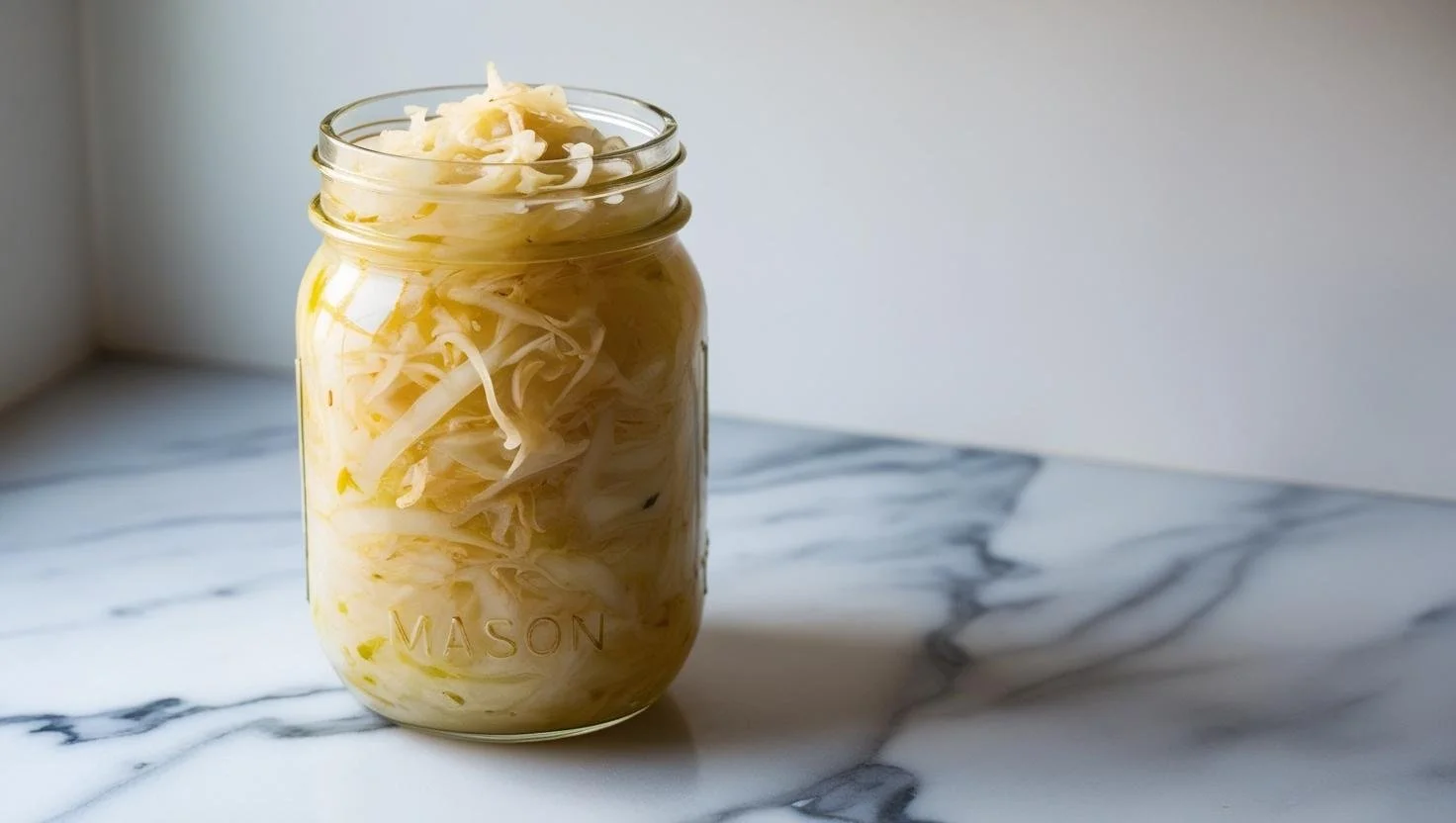Sauerkraut
"This is as simple as it gets and so rewarding. The basis is cabbage and salt and some patience. From this recipe you can get creative and start to layer flavours like star anise, caraway seeds, fennel seeds, chilli and you can also start to play with vegetables like adding carrot, red cabbage, fennel and so on.
Ingredients:
1 large, firm head of white or green cabbage (about 1.5kg), outer leaves removed
2-3 tablespoons of good quality sea salt (no iodised rubbish, mind)
Optional: a few caraway seeds, juniper berries, or bay leaves (but only if you're feeling a bit fancy)
Method:
Chop, Chop!: "Right, first things first, get that cabbage chopped. You want it nice and thin, like you're making a coleslaw. If you've got a mandoline, brilliant. If not, just use a good knife to slice the cabbage as thinly as you can.
Salt it Up: "Pop the cabbage into your bowl and sprinkle over the salt. Get your hands in there and massage it. You'll feel the cabbage start to soften and see the juices start to come out. That's what we want. Keep going for a 5-10 minutes, until the cabbage is nice and limp."
Flavour it: "Now’s the time add flavours to in a few caraway seeds, juniper berries, or a bay leaf or two. But honestly, it's just as good without. Don't over complicate it."
Pack it Down: "Right, now for the important bit. Get your jar or crock and start packing in the cabbage. Press it down hard as you go, to get rid of any air pockets. You want all that juice to come to the top, covering the cabbage completely."
Weight it Down: "Now, get your weight and put it on top of the cabbage. Make sure it's submerged under the liquid. If it's not, you might need to add a bit of brine (just a bit of extra salt dissolved in water). You don't want any of that cabbage poking out, or it'll go mouldy."
Wait and See: "Now, the hard part: waiting. Cover the jar with a cloth or loose lid and leave it somewhere cool and dark for a week or two. Check on it every day or two. You'll see bubbles forming, that's the fermentation happening. Give it a taste after a week. If you like it, stick it in the fridge. If not, leave it for a bit longer."
Enjoy!: "Once it's to your liking, stick it in the fridge and enjoy. It's brilliant with sausages, pork, or just on its own. Good, honest sauerkraut, made the proper way."
"There you have it, simple as that. Now get stuck in and make some bloody good sauerkraut."
Health Benefits
Sauerkraut, being a fermented food, offers a range of potential health benefits, primarily due to its probiotic content and nutrient richness. Here's a summary of the proven health benefits:
Improved Gut Health:
Sauerkraut is a rich source of probiotics, beneficial bacteria that support a healthy gut microbiome. A balanced gut microbiome is crucial for digestion, nutrient absorption, and overall health.
Boosted Immune System:
A significant portion of the immune system resides in the gut. By promoting a healthy gut, sauerkraut can strengthen immune function. It also contains vitamin C, a known immune booster.
Anti-inflammatory Properties:
Sauerkraut contains antioxidants and other compounds that can help reduce inflammation in the body.
Nutrient Richness:
It's a good source of vitamins and minerals, including vitamin C, vitamin K, and various B vitamins.
Potential Anticancer Properties:
Some studies suggest that compounds in sauerkraut may have anticancer properties, though more research is needed in this area.
Equipment:
A large, sturdy knife or mandoline
A large bowl (non-reactive, like glass or ceramic)
A heavy weight (a clean stone, a jar filled with water, or a fermentation weight)
A large jar or crock (again, non-reactive)
“We are committed to sharing the traditional foods we grew up with as kids.”


